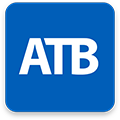Mastering payroll is essential for the smooth operation of your small business. As you continue to grow and add people to your team, navigating payroll processes becomes increasingly complex. From choosing payment methods to handling remittances, here's a guide to streamline your system so your team members are paid the right amount on time.
The basics
As an established entrepreneur, you already have your business number from the Canada Revenue Agency, so what’s next?
Employees vs. contractors
First, you have to determine what type of staff member you’re paying. The difference between paying your employee and a contractor concerns the legal classification, tax obligations, and level of control and independence in the working relationship. Misclassification can lead to penalties including back taxes and fines, so it's important to choose wisely and consult with professionals, such as your accountant and legal team, if needed.
Employees work under you, may receive benefits, and are protected by labour laws. In this case, you are responsible for withholding and remitting payroll taxes. Contractors have more independence, are often hired for specific projects or periods of time, and are responsible for their own taxes and insurance.
To classify a worker as an employee or a contractor, refer to this Canada Revenue Agency guide for classification.
Factors CRA may consider:
- Who owns/supplies the tools/equipment?
- Who sets the working schedule?
- Can the worker freely offer the same service to other customers?
The CRA might evaluate other factors depending on your unique situation.
Paying employees
- Collect employee information, including the Social Insurance Number, a filled-out TD1 Personal Tax Credits Returns form and banking details
- Determine a payroll schedule and method aligning with your business needs and provincial regulations
- Cash flow tip: Align how you pay with how your company gets paid
- Before your first remittance due date, open a payroll program account and a separate bank account for these Canada Revenue Agency deductions: federal and provincial income taxes, the Canada Pension Plan and Employment Insurance. Use the CRA’s deduction calculator.
- Any questions? Use the CRA’s Employers’ Guide – Payroll Deductions and Remittances.
- Prepare and distribute T4 slips (detailing their income and deductions) to employees by the deadline
- Provide employee with pay stubs regularly and a record of employment when they quit
- To avoid complicated calculations and fees for mistakes, automate your payroll. Most popular accounting and bookkeeping softwares (like QuickBooks and Wave) have payroll capabilities
Paying contractors
- Request that contractors fill out Form T2125, providing their information such as legal name, business number and GST registration number
- Provide contractors with a T4A slip if you've paid them more than $500 for services rendered during the tax year
- Retain copies of invoices issued by the contractor, detailing services provided, agreed-upon rates and total amounts owed
Options for paying your team
Here are the best payroll options:
- Electronic Funds Transfer: Eliminates the need for cheques and allows for faster and more secure payments directly into employees' bank accounts. Business owners can send a single-time payment or pay multiple people simultaneously, making it a flexible option for those with larger teams.
- Interac e-Transfer: Only need your team member's email address to send money.
We don’t recommend paying by cheque because it is not as secure or efficient as the above options. Cheques are expensive, have delivery costs, and can be lost or stolen, and your team has to take time to deposit them and may need to wait even longer for fund access during the hold period.
You can make payroll easier with Automated Payroll by Ceridian, a company that helps remove paperwork, like tax filing and reconciliation. It saves time and money, reduces risk and ensures compliance. ATB clients receive discounts of up to 25 per cent off Ceridian's automated payroll products, making the process easier for you and your employees.
Tips
- Stay organized and compliant by maintaining accurate records and keeping updated on tax laws
- Automate repetitive tasks with payroll software to reduce errors and save time
- Establish a payroll schedule that ensures timely payments to your employees, whether it's weekly, biweekly or monthly
- Keep employees informed about their compensation, benefits, and any changes to payroll policies to foster transparency
- Seek expert advice if payroll management becomes overwhelming
- Avoid penalties by paying remittances in the right amount to the right account. (If you accidentally pay something incorrectly, it can take months to fix.)
Recap: Payroll process
Mastering payroll is crucial for the success of your business as it expands. To streamline the process, collect necessary employee information, determine a suitable schedule and method, and open accounts for tax deductions. Consider using electronic payment methods and automating your payroll system to save time and reduce errors. By staying organized, compliant and informed about payroll policies and regulations, you can ensure your team members are compensated accurately and on time.
